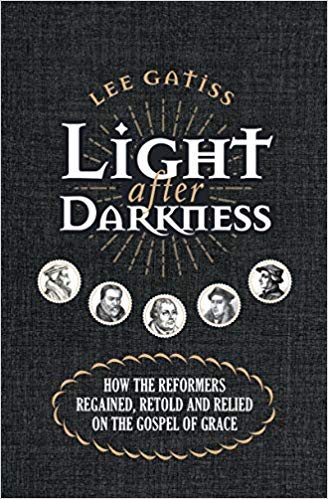A Book Review from Books At a Glance
By Andrew Ballitch
Summary and Review
Lee Gatiss offers snapshots of five of the most well-known and influential Protestant reformers of the sixteenth century: Ulrich Zwingli, William Tyndale, Martin Luther, John Calvin, and Thomas Cranmer. Each picture is quite narrowly focused through a particular doctrinal or applicational lens, such that the “book is about how the Protestant Reformers of the sixteenth century regained, retold, and relied on the gospel of grace—and what we can learn from them.” Gatiss’s stated hope is that the book “will strengthen and inspire passionate and imperfect Christians today to emulate their clarity, their courage, and their compassion for the lost” (7).
Delivering sound, usable history, Gatiss provides essential historical context and does not shy away from the warts of his subjects. This is true from the start with his treatment of Zwingli. This first chapter begins with the sixteenth-century Reformation context, then centers on the character flaws of the father of the Swiss reform movement. Zwingli struggled with sexual sin, especially in his early years, and to a degree covered it up, even secretly marrying in defiance of the law of priestly celibacy. Gatiss sets the precedent of application early on as well, using this example of moral failure to challenge a modern church rife with allegations of abuse and immorality to walk in the light, rather than covering up the truth in a kind of misguided defense of God and the church.
Tyndale, in chapter 2, receives similar treatment as a platform for doctrine and application, but this time through the theological lens of sola Scriptura. In chapter 3, Luther enables a discussion of justification by faith and Christian freedom. Chapter 4 combats the caricature of Reformed theology’s deemphasis of, or even opposition to, missions and evangelism by strategically handling Calvin on the topic. Chapter 5, the longest chapter of the book, looks at Cranmer and more specifically the Book of Common Prayer.
A closer look at chapter 5 is warranted, as it illustrates the obvious English and Anglican sympathies that present themselves throughout the book. Here Gatiss argues that the Book of Common Prayer is intended as an evangelistic tool, and while it is much more, it has a “mission edge” (100). This argument unfolds in three movements. First, a defense of the prayer book’s clarity on the Bible as the word of God. A direct result of this underlying conviction is a Bible saturated liturgy. Second, the prayer book teaches that salvation is secured by God, it is all of grace. And third, the Christian life is one reliant on God’s grace. Gatiss directly opposes Anglicans today who would believe and teach differently. They are the innovators. The have left the faith, as he illustrates along the way. Finally, Gatiss concludes with a bit of a rant, though a rant that is seemingly on point. While he would not dare to call all evangelical churches to adopt the Book of Common Prayer, he does lament the loss of Scripture and preaching in worship services today, both of which are so central to the church’s mission. If no prayer book, where is the public confession of sin in evangelical church services? Where are the creeds? The carefully composed prayers? The Ten Commandments? The impetus to proclaim afresh the Reformed faith to a new generation? Apt questions indeed.
My only significant complaints are a lack of overall coherence or continuity between chapters, and the somewhat arbitrary selection of topics. The former is likely the result of the disparate beginnings mentioned in the preface, from essays to conference talks surrounding the 500th anniversary of the Reformation celebration. The latter stems from using biographies as platforms for highlighting certain doctrines and applicational points. For instance, Luther could have provided the stage for discussing character flaws. Or for the importance of Bible-heavy liturgy. Yet as it is designed to encourage contemporary evangelicals toward greater faithfulness, both in doctrine and devotion, it succeeds. It is most useful as a tool for getting those hesitant about the relevance of history, especially the Reformation, reading history. Certainly a noble cause for which I highly recommend this book.
Andrew Ballitch is a pastor at Hunsinger Lane Baptist Church in Louisville, Kentucky. He also teaches church history at Boyce College and The Southern Baptist Theological Seminary.
